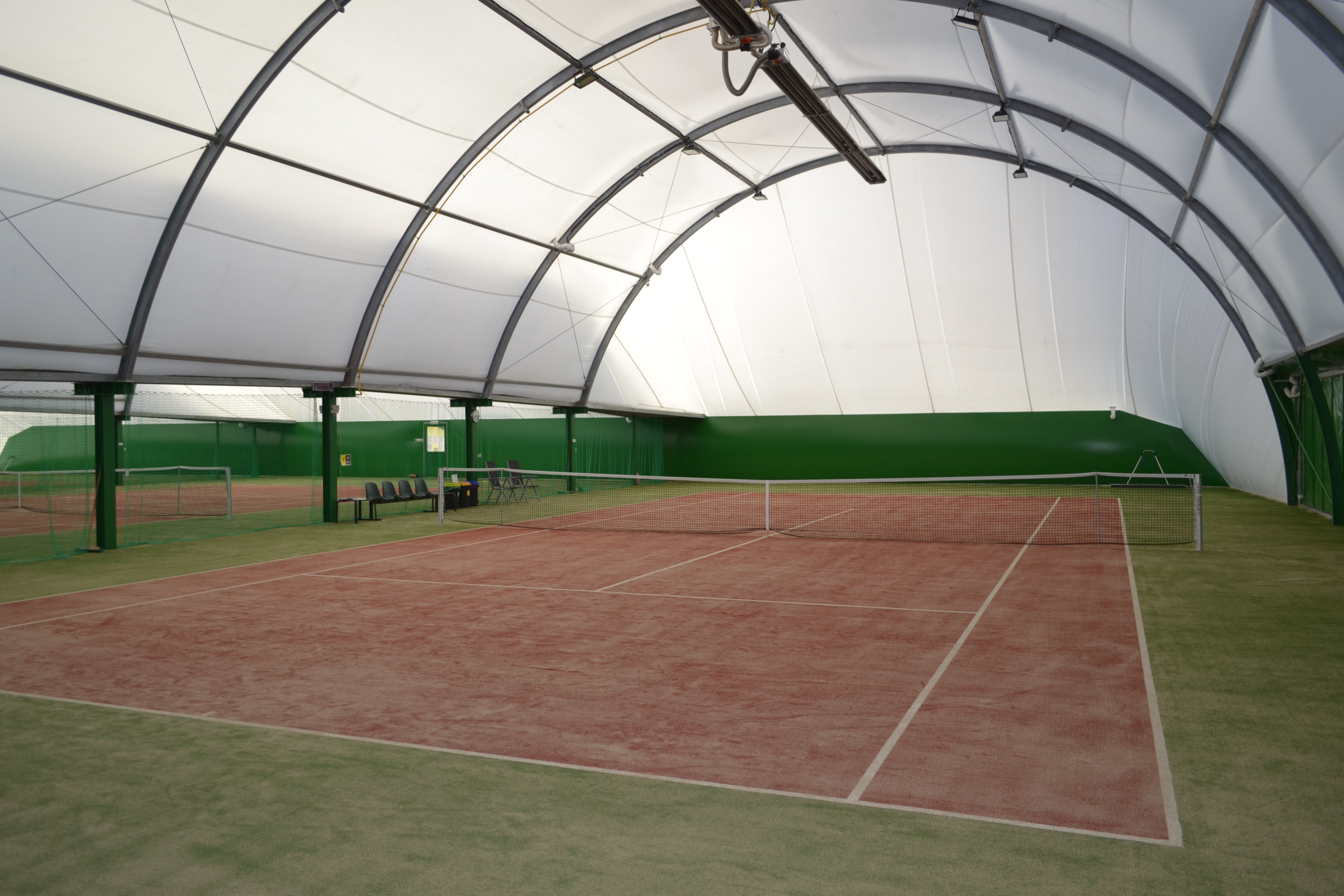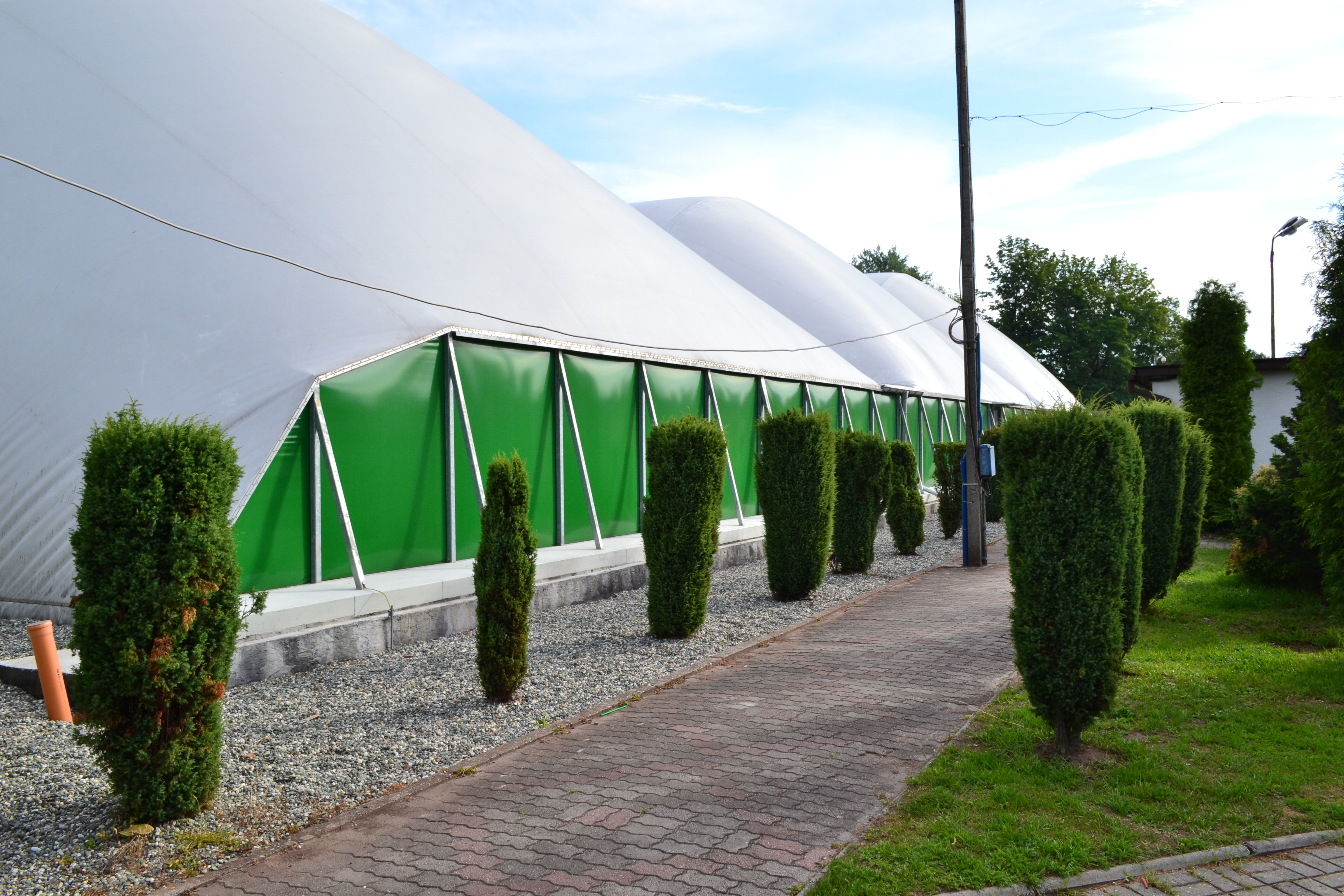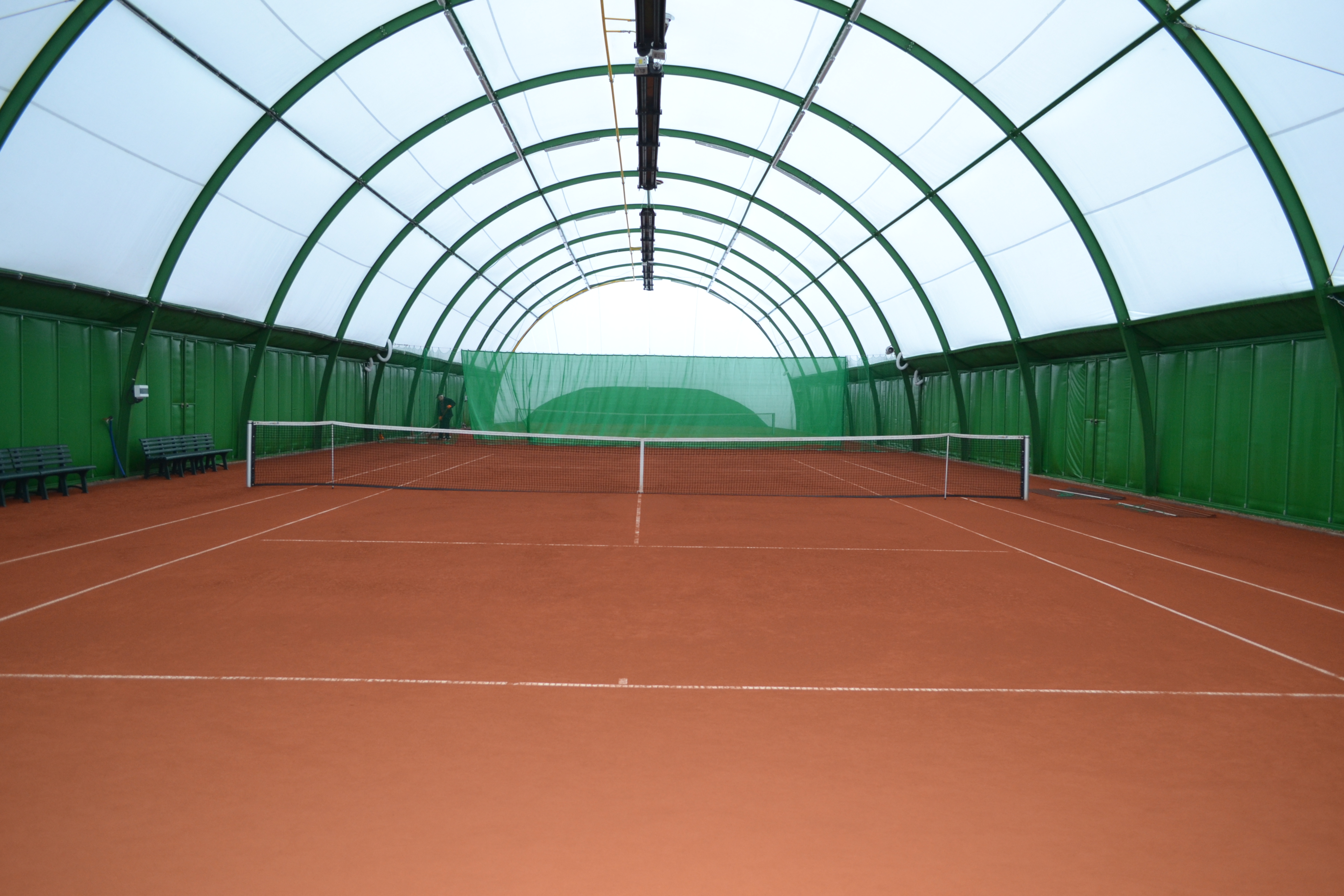Tennis
Arched halls
The covering of a tennis court allows its use during 12 months a year without winter breaks. An arched hall is the best solution for local tennis clubs. Arched halls are all-year-round facilities and have insulated walls and roofing, which limits heating costs. For the summer period the side walls (sliding shutters) can be open – this solution also provides the necessary ventilation and cooling of the interior.
The solution dedicated to a tennis game is a five-arched hall with sloping gables.
This kind of hall is supported on 5 arched I-beams made of steel. It’s roof falls from the extreme beams to the wall frame with a height of 2,3m.

Thanks to the sloping gables w obtain:
- reduced internal volume of the hall and as a consequence reduced cost of heating
- increased stability of the shell during heavy wind gusts
- execution of the structure by optimal consumption of materials and for a price much lower in relation to traditional heavy structures
Construction of anrched halls for tennis
An arched hall is the most optimal structural system. Combined with a lightweight tarpaulin covering the consumption of steel is four times lower compared to the traditional halls with a gable roof – we recommend arched halls.
The PVC membrane has:
- high breaking strength (the weight of 2,7 tons can be hung on a 5 cm strip of material)
- UV stabilisers which extend durability of materials, protect them against ageing and colour fading
- flame retardant certificate FR B1/M2 DIN 4102
- resistance against microbial and fungal attacks
- transmission of the sunlight, which ensures a uniform distribution of the daylight inside the hall all day long and eliminates the necessity of any artificial lighting
It’s a facility for year-round use. It’s designed according to the standards for typical buildings and it’s resistant to the strongest winds. it doesn’t require snow removal during the winter. But be careful – many manufacturers offer tents (they’re not halls), lightweight and cheap structures, but their operation during the winter requires continuous snow removal and heating.
The equipment, that by other producers is available for an extra charge, we offer as standard:
- energy-saving fluorescent illumination with remote control
- double-ply skin with an airbag
- sliding shutters
- concrete foundations
- skylights of any size
- infrared heaters 2x45W
- exterior steel insulated door or non-insulated entry gate
Optional:
- coating made of translucent material
- combination of several halls in one object with a possibility to create space for the communication, benches or stands
- auxiliary rooms (cloakroom, toilets)
- sports equipment and professional tennis surface
Operating cost of of arched halls
The following are examples of operating costs of an arches hall for tennis depending on the amount of covered courts.
Gas consumption – HEATING
| Heating | 1 court | 2 courts | 3 courts |
| Heater performance | 2x45kW | 4x45kW | 6x45kW |
| Natural gas / 180 days | 12-16 thousand m3 | 19-24 thousand m3 | 25-32 thousand m3 |
Electricity – INSULATING CUSCION (AIRBAG)
To keep blowing the air into the airbag it’s necessary a fan with the power of 0,7 – 0,1 kW.
Electricity – LIGHTING
| Lighting | 1 court | 2 courts | 3 courts |
| 300 lux – standard | 3,5 kW | 7 kW | 10,5 kW |
| Consumption during 180 days | 4.410 kWh | 8.820 kWh | 13.230 kWh |
Assumptions: the lamps are turned on 7h a day on every tennis court (only during the afternoon/evening), there is no need for the artificial lighting during the day.
Balance of costs
Assumptions:
- winter season – 180 operating days of the hall
- court’s occupancy – 10 h/day
- cost of electricity – 0.15 €/kWh
- cost of natural gas – 0,60 €/m³
| Summary (for one year) | 1 court | 2 courts | 3 courts |
| Electricity cost | 1.000 € | 2.000 € | 3.000 € |
| Natural gas cost | 6.250 € | 10.750 € | 14.250 € |
The costs given above are based on data obtained from several sports facilities and they present inflated estimates. The actual energy consumption depend on the intensity and time of use, temperature inside the hall, weather conditions, location and type of the surface.


